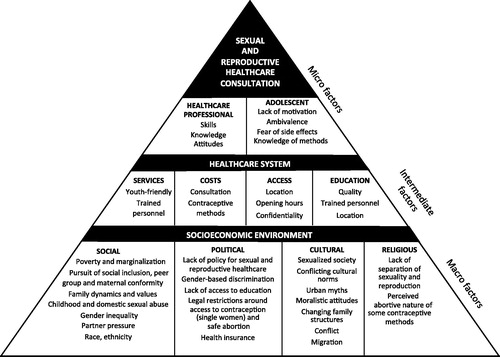Figures & data
Figure 1. Birth and abortion rates per 1000 15–19-year olds [Citation7,Citation19] (Adapted from Apter et al. [Citation18])
![Figure 1. Birth and abortion rates per 1000 15–19-year olds [Citation7,Citation19] (Adapted from Apter et al. [Citation18])](/cms/asset/b3be9b20-cd1c-417b-a1ed-0cb250d9d1f2/iejc_a_1237629_f0001_c.jpg)
Figure 2. Percentage of women aged 20–24 years reporting first intercourse in their teenage years [Citation7,Citation19] (Adapted from Apter et al. [Citation18])
![Figure 2. Percentage of women aged 20–24 years reporting first intercourse in their teenage years [Citation7,Citation19] (Adapted from Apter et al. [Citation18])](/cms/asset/0bcb7109-ed6d-434f-84fa-589650c97bc2/iejc_a_1237629_f0002_c.jpg)
Table 1. Regional barriers to accessing effective adolescent contraception identified by the CARE group.
Table 2. Examples of regional programs providing good contraceptive counselling and care in sexual and reproductive health (SRH).
Table 3. Some of the common myths amongst women and health care professionals around the prescribing or use of methods of contraception.[Citation86,Citation88,Citation89,Citation101–104]
Figure 4. The GATHER approach to counselling about contraception (Adapted from Rinehart et al. [Citation91])
![Figure 4. The GATHER approach to counselling about contraception (Adapted from Rinehart et al. [Citation91])](/cms/asset/88ed6aee-4085-45ef-b382-240938386613/iejc_a_1237629_f0004_b.jpg)
Figure 5. SOS! mobile version: smartphone tools to aid compliance with contraceptive methods.[Citation98]
![Figure 5. SOS! mobile version: smartphone tools to aid compliance with contraceptive methods.[Citation98]](/cms/asset/1fa1831c-62ab-41ec-9781-dc72c7085812/iejc_a_1237629_f0005_c.jpg)

